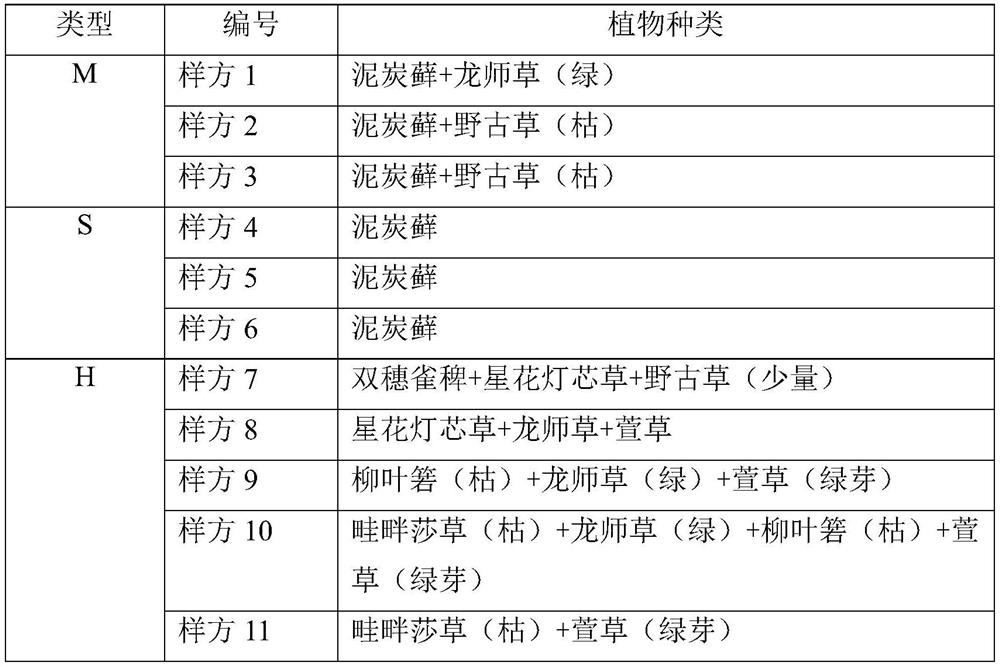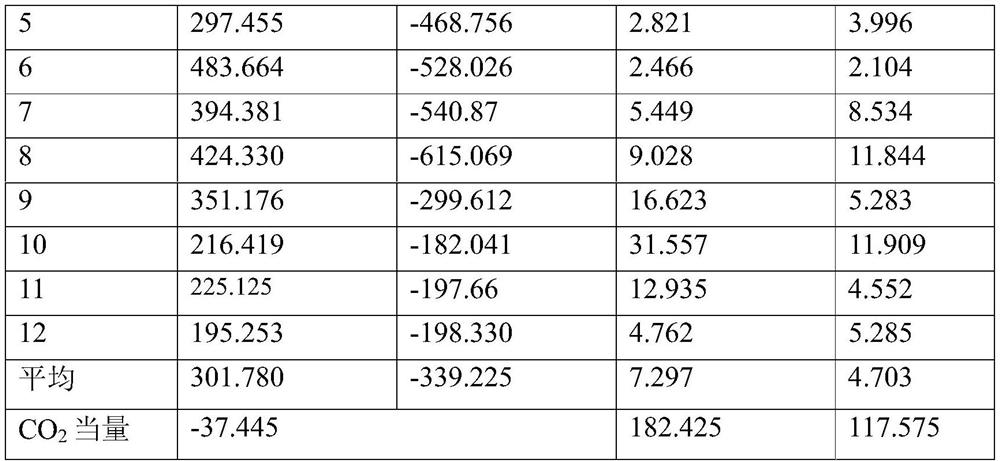Method for determining carbon sequestration capacity of sphagnum marsh wetland
A peat moss and wetland technology, applied in the field of carbon sink determination, can solve problems such as the difficulty of quantitative evaluation
- Summary
- Abstract
- Description
- Claims
- Application Information
AI Technical Summary
Problems solved by technology
Method used
Image
Examples
Embodiment Construction
[0042] The present invention will be described in detail below.
[0043] A method for determining the carbon sink capacity of sphagnum swamp wetlands, comprising:
[0044] Measure the emission flux of greenhouse gases from sphagnum swamp wetlands B;
[0045] Measure the carbon sink C1 of herbaceous plants and the carbon sink C2 of sphagnum moss in the sphagnum swamp wetland;
[0046] Measure the decomposition rate D of sphagnum swamp wetlands;
[0047] The carbon sink X of the peat moss swamp wetland is calculated, and the calculation formula is: X=C1+C2-B-D.
[0048] The method for determining the carbon sink capacity of sphagnum swamp wetlands in the present application can capture the main points of carbon sequestration and carbon emission, and more objectively evaluate the carbon sink capacity of sphagnum swamp wetlands.
[0049] In this embodiment, the steps for measuring the emission flux B of greenhouse gases are as follows:
[0050] Select multiple quadrats on the ...
PUM
 Login to View More
Login to View More Abstract
Description
Claims
Application Information
 Login to View More
Login to View More - R&D
- Intellectual Property
- Life Sciences
- Materials
- Tech Scout
- Unparalleled Data Quality
- Higher Quality Content
- 60% Fewer Hallucinations
Browse by: Latest US Patents, China's latest patents, Technical Efficacy Thesaurus, Application Domain, Technology Topic, Popular Technical Reports.
© 2025 PatSnap. All rights reserved.Legal|Privacy policy|Modern Slavery Act Transparency Statement|Sitemap|About US| Contact US: help@patsnap.com



